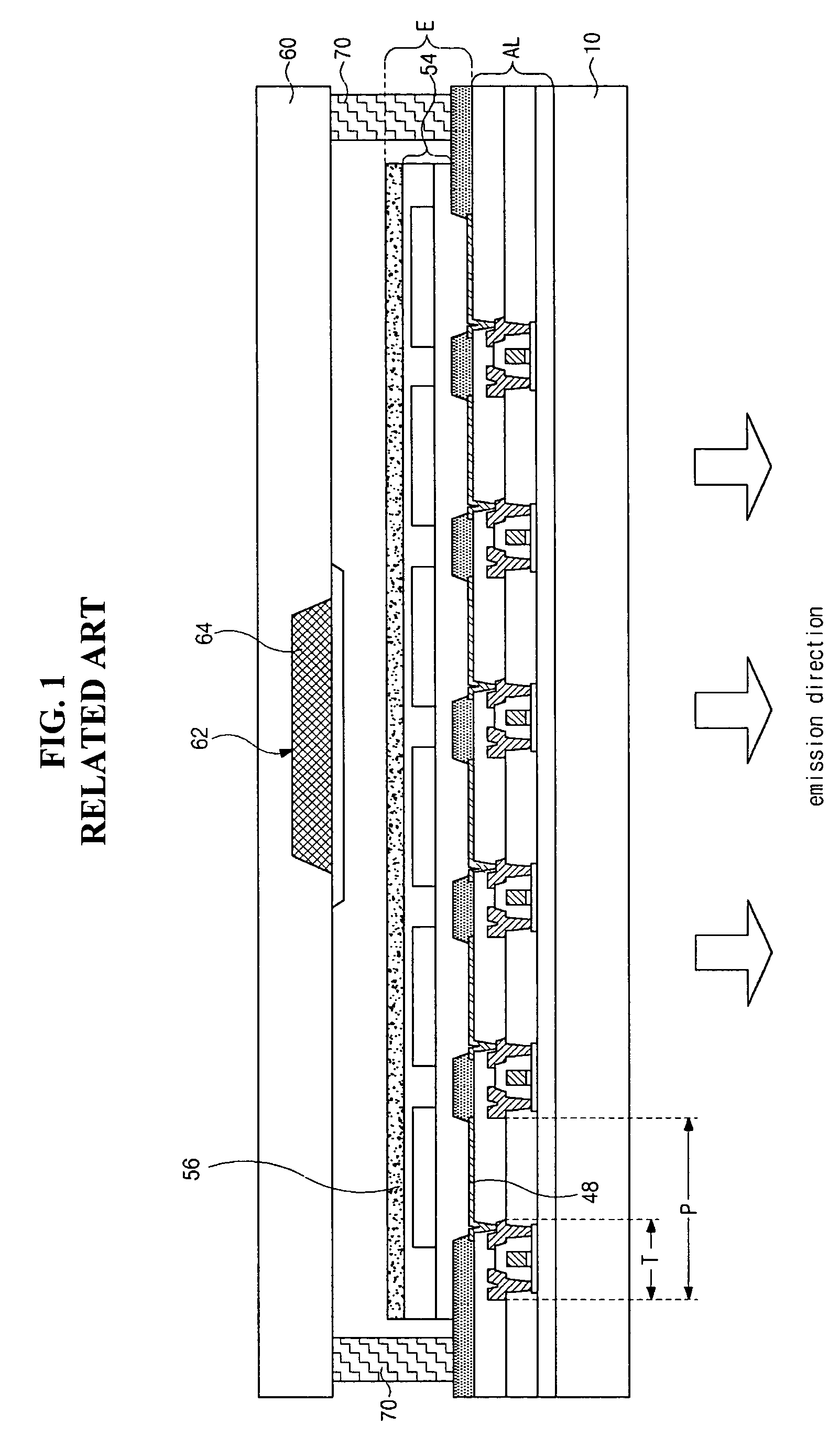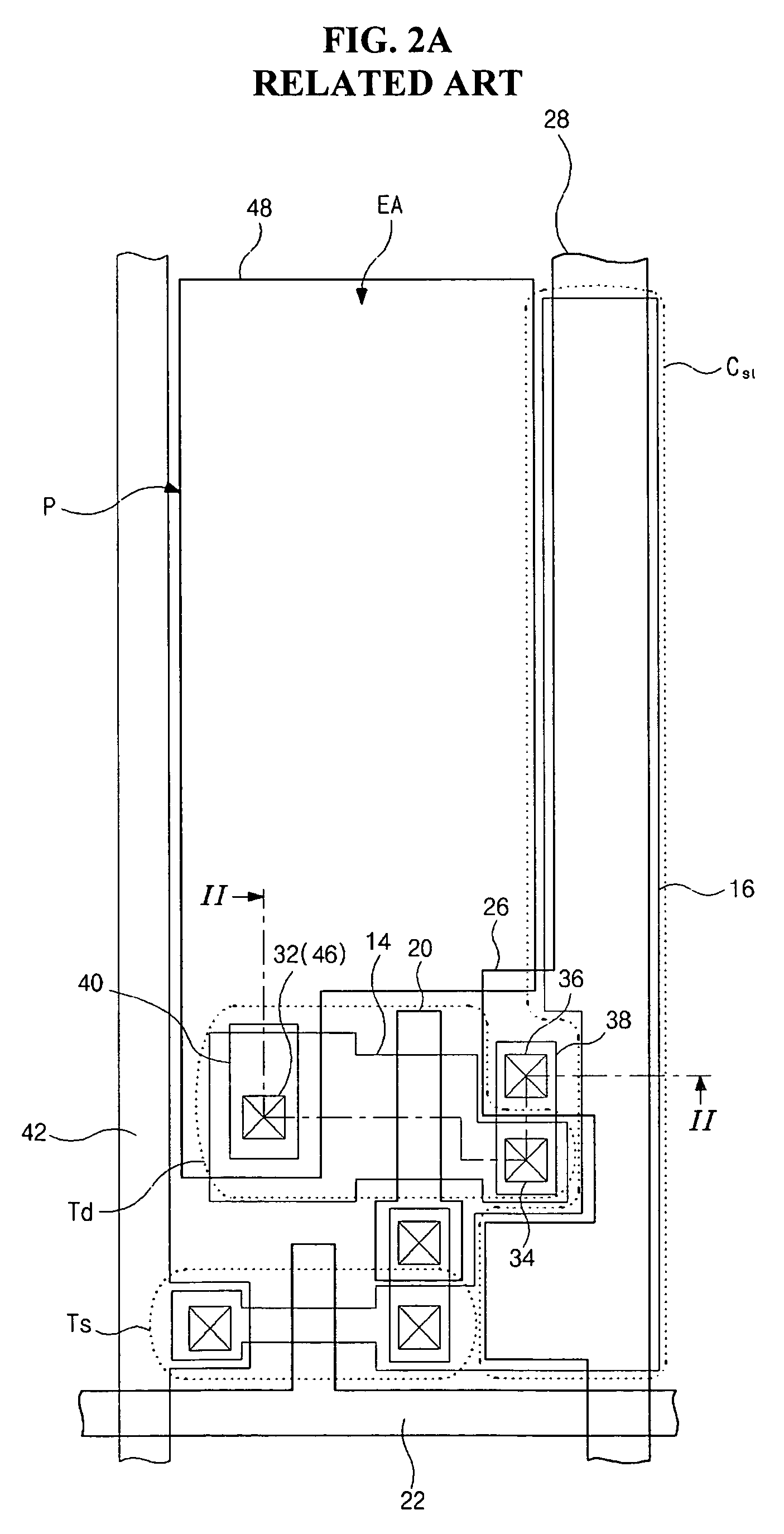Dual panel type organic electroluminescent display device and method of fabricating the same
a technology substrate, which is applied in the direction of discharge tube luminescnet screens, identification means, instruments, etc., can solve the problems of low direct current voltage of organic electroluminescent display devices, waste of all manufacturing costs and source materials required for array elements, and failure of oeld devices, etc., to achieve high aperture ratio, improve yield and productivity, and high definition
- Summary
- Abstract
- Description
- Claims
- Application Information
AI Technical Summary
Benefits of technology
Problems solved by technology
Method used
Image
Examples
first embodiment
[0054]FIG. 3 is a cross-sectional view of a dual panel type organic electroluminescent display (OELD) device according to the present invention. In FIG. 3, the dual panel type organic electroluminescent display (OELD) device includes a first substrate 110 and a second substrate 130 that are spaced apart and face each other. An array element layer A including a plurality of thin film transistors T is formed on an inner surface of the first substrate 110. A plurality of connection patterns 120 having a predetermined thickness are formed on the array element layer A. Each connection pattern 120 is connected to each thin film transistor T.
[0055]The predetermined thickness of the connection patterns 120 may be selected from a thickness range such that a pixel driving part and an emission part formed on different substrates are electrically connected to each other by the connection patterns 120. Thus, the thickness of the connection patterns 120 corresponds to a cell gap between the subst...
second embodiment
[0071]FIG. 5 is a schematic plan view of a substrate for the dual panel type OELD device according to the present invention, and shows the second substrate including the moisture absorption layer.
[0072]In FIG. 5, a plurality of pixel areas P, each of which is a minimum unit for an image, is defined on a substrate 250 and spaced apart from each other. A space between the pixel areas P is referred to as a non-pixel area NP. A moisture absorption layer 262 is formed corresponding to the non-pixel area NP.
[0073]An insulating pattern 254 and a partition wall 256 of FIG. 4 are sequentially formed under the moisture absorption layer 262. In fact, the moisture absorption layer 262 is separated from a second electrode 260 formed in the pixel area P due to a thickness of the partition wall 256.
[0074]FIGS. 6A to 6C show a dual panel type OELD device according to a third embodiment of the present invention. FIG. 6A is a cross-sectional view of the dual panel type OELD device, FIG. 6B is a view ...
fifth embodiment
[0105]FIG. 10 is a cross-sectional view of a dual panel type OELD device according to the present invention. The dual panel type OELD device includes a color filter layer as the full color element.
[0106]As shown in FIG. 10, a first substrate 510 and a second substrate 550 are spaced apart from and facing each other. A color filter layer 552 and a black matrix 554 are formed on an inner surface of the second substrate 550. The color filter layer 552 includes red, green and blue sub-color filters 552a, 552b and 552c, and the black matrix 554 is disposed between adjacent sub-color filters 552a, 552b and 552c of the color filter layer 552. An overcoat layer 558 and a barrier layer 560 are sequentially formed on the color filter layer 552 and the black matrix 554. The overcoat layer 558 planarizes a surface of the second substrate 550 including the color filter layer 552 and the black matrix 554. The barrier layer 560 prevents outgassing from the color filter layer 552.
[0107]A first elec...
PUM
 Login to View More
Login to View More Abstract
Description
Claims
Application Information
 Login to View More
Login to View More - R&D
- Intellectual Property
- Life Sciences
- Materials
- Tech Scout
- Unparalleled Data Quality
- Higher Quality Content
- 60% Fewer Hallucinations
Browse by: Latest US Patents, China's latest patents, Technical Efficacy Thesaurus, Application Domain, Technology Topic, Popular Technical Reports.
© 2025 PatSnap. All rights reserved.Legal|Privacy policy|Modern Slavery Act Transparency Statement|Sitemap|About US| Contact US: help@patsnap.com



